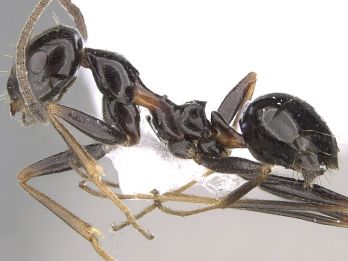Browsing ant
Browsing ant (Lepisiota frauenfeldi) is not native to Australia and is a serious environmental pest.
It can form super colonies that threaten native ant species and other insects in the area of infestation. The colonies can also damage plants and landscaping.
Background
Browsing ant is commonly found in the Mediterranean, Southern Europe, Western Asia and North Africa.
It most likely arrived here from Timor Leste or Malaysia – both have strong trade links to Australia.
National response programs are underway in the Northern Territory, Queensland and Western Australia to eradicate infestations of browsing ant. All of the programs are on track to achieve eradication.
Impacts
The browsing ant is tiny, but an outbreak could have huge consequences for Australia’s:
- farming community
- agriculture and horticulture sectors
- plant health and natural environment.
It farms and protects scale insects, which can eventually kill the plants it lives on.
It also eats and displaces native ant species, as well as other invertebrates.
Identification
Browsing ant is slender with a consistent shiny dark brown colour. It is 3–4mm in length with long antennae and legs.
The browsing ant runs about in a crazy or haphazard manner when disturbed.
It forms super colonies reaching large numbers that are noticeable on the ground, as well as in trees, leaf litter and infrastructure such as electrical boxes.


